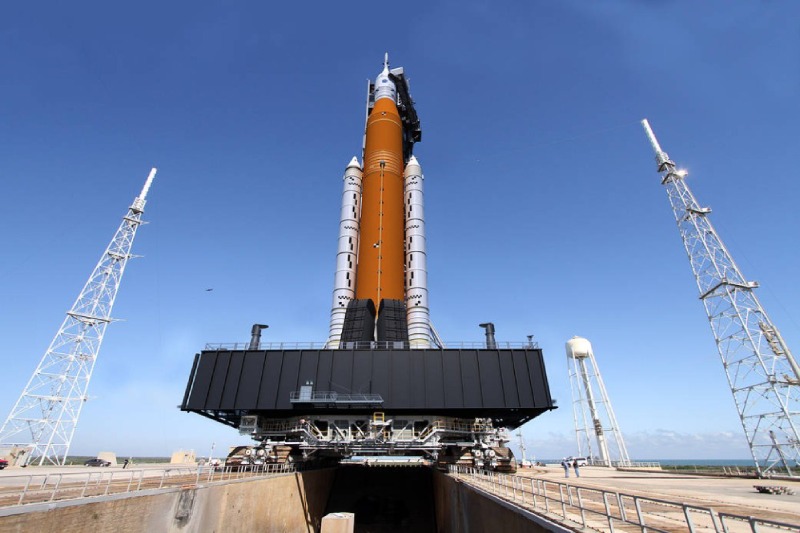In the upcoming year, a number of new space missions are scheduled. A preview of some of the ones to look out for in 2024 is provided here.
Artemis II
In 2022, the American space agency NASA conducted the Artemis program’s first flight. The Orion spacecraft was launched on a lunar orbit as part of the Artemis I mission.
After NASA’s Apollo 17 mission in 1972, Artemis seeks to send humans back to the moon.
The Orion spacecraft, or capsule, and NASA’s massive Space Launch System (SLS) rocket, which sent it into space, were both tested in Artemis I. During that voyage, Orion flew close to the moon and beyond 400,000 kilometers from Earth. Artemis I was deemed a great success by NASA officials.
Artemis II is scheduled for launch by NASA in late 2024. It is anticipated to circle the moon in the same manner as Artemis I, but with four NASA astronauts on board Orion.
“To verify all of the spacecraft’s systems operate as designed with crew aboard in the actual environment of deep space,” according to NASA, is the goal of Artemis II.
Moon Lander Launches
Even if Artemis II won’t be able to land, a number of other lunar landers are anticipated to do so in 2024.
On January 8, the first of these launches is scheduled to occur. Peregrine, a lander, is involved. The American commercial space company Astrobotic Technologies is the manufacturer of the 1.9-meter-tall spaceship. It will take off atop a United Launch Alliance (ULA) Vulcan Centaur rocket.
Twenty scientific experiments for seven countries are anticipated to be carried to the moon by Peregrine. It is intended to arrive in the Sinus Viscositatis region. According to NASA, the region lies adjacent to the Gruithuisen Domes, which are the biggest dark spots on the moon’s near side.
Griffin, another Astrobotic lander, is scheduled to launch in late 2024 to the lunar south pole. It will be toting the VIPER rover, an exploration robot. The purpose of VIPER is to look for water sources on the moon.
In addition to those, NASA is receiving two landers from the American space company Intuitive Machines, which are scheduled to launch in 2019.
In the middle of January, Japan will also try to become the fifth country to set foot on the moon. The spacecraft, known as SLIM, was launched by the nation’s space agency in September. The purpose of SLIM is to investigate the viability of spacecraft landing on highly targeted objects.
The Hera mission of ESA
In order to revisit an asteroid system that NASA’s DART spacecraft visited in 2022, the European Space Agency (ESA) intends to launch its Hera spacecraft in October. Hera is made to gather information about the Didymos system, which is the intended goal. It is anticipated that the spacecraft will measure the specific impacts of DART’s collision and closely inspect Didymos’ physical characteristics.
Europa Clipper
In October, NASA intends to launch the Europa Clipper mission. The purpose of this orbiter is to conduct in-depth research on Jupiter’s moon Europa. The mission will specifically search for indications that the frozen moon could harbor favorable conditions for life. According to NASA, the orbiter will “perform repeated close flybys of the ice moon” while in orbit around Jupiter.
Boeing’s test flight of the Starliner
Boeing and NASA have stated that they intend to launch the Starliner spacecraft’s first crewed test flight. NASA claims that Starliner will be prepared for takeoff by March 2024. We’ll decide on a debut date later.
In May of last year, the spacecraft successfully completed its maiden unmanned flight test to the International Space Station (ISS). However, Boeing encountered multiple technical issues with Starliner during the voyage, and as it gets ready for the scheduled crewed flight, it has collaborated with NASA to resolve the issues.
SpaceX Starship experiment
Since 2020, SpaceX, a different NASA partner, has been effectively delivering supplies and personnel to the International Space Station (ISS) using its rockets and spacecraft. However, the business plans to successfully test-fly its extremely hefty Starship spacecraft in 2024.
In 2023, SpaceX conducted two unsuccessful Starship tests that resulted in explosions: one in April and the other in November. The Texas launch structure sustained significant damage as a result of the explosion in April. According to SpaceX, it has been looking into the problems surrounding the explosions and intends to test Starship once more as soon as feasible. However, it will have to wait until the Federal Aviation Administration (FAA) of the United States concludes its examination into the damage to the launch site and authorizes a fresh test.





